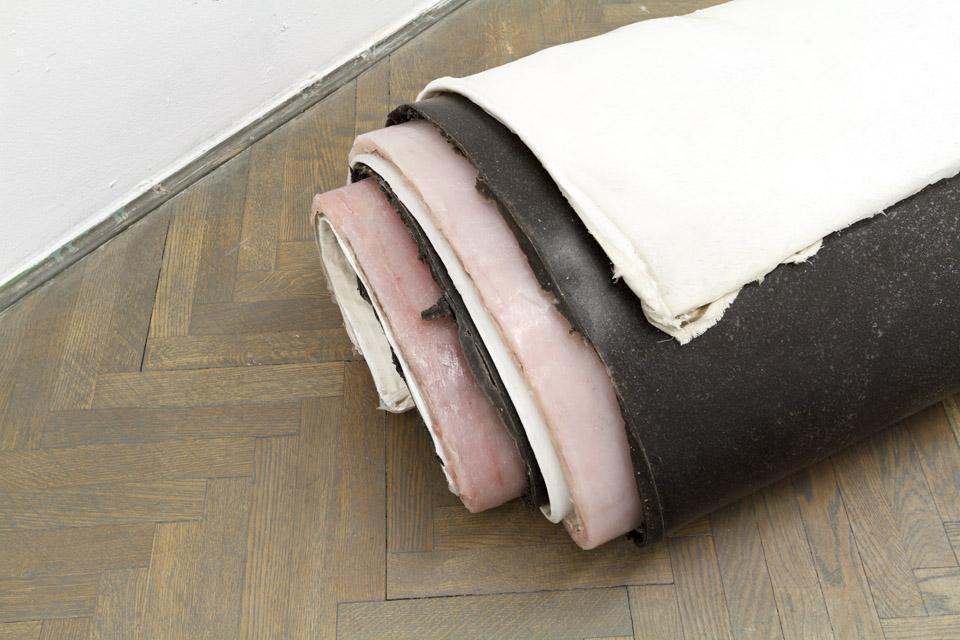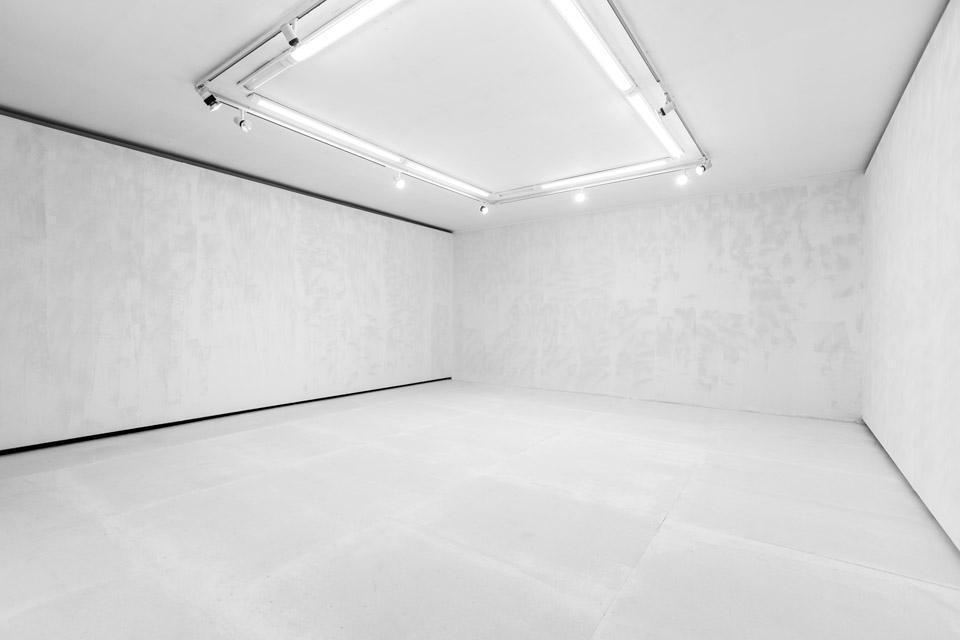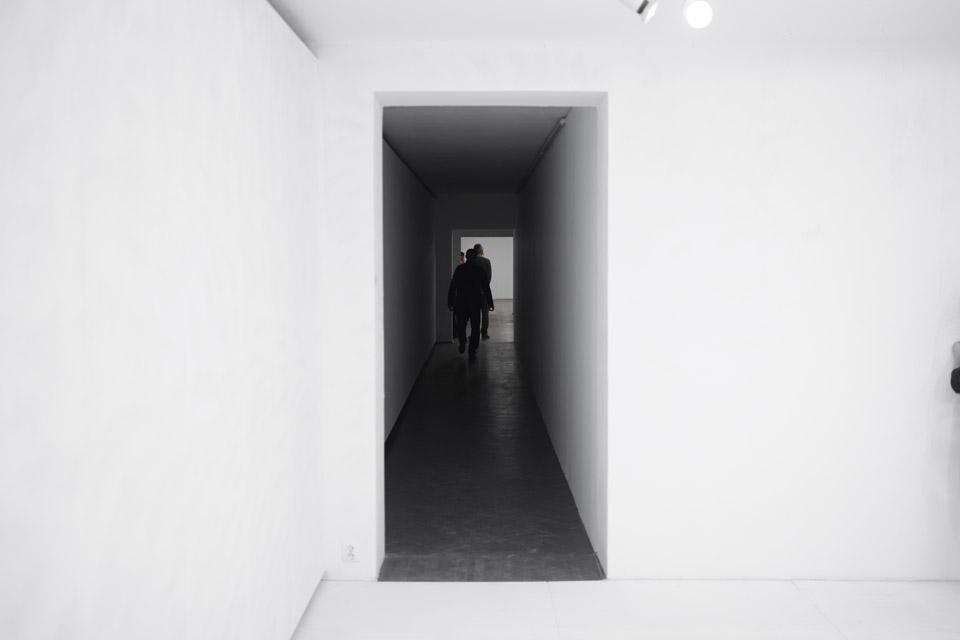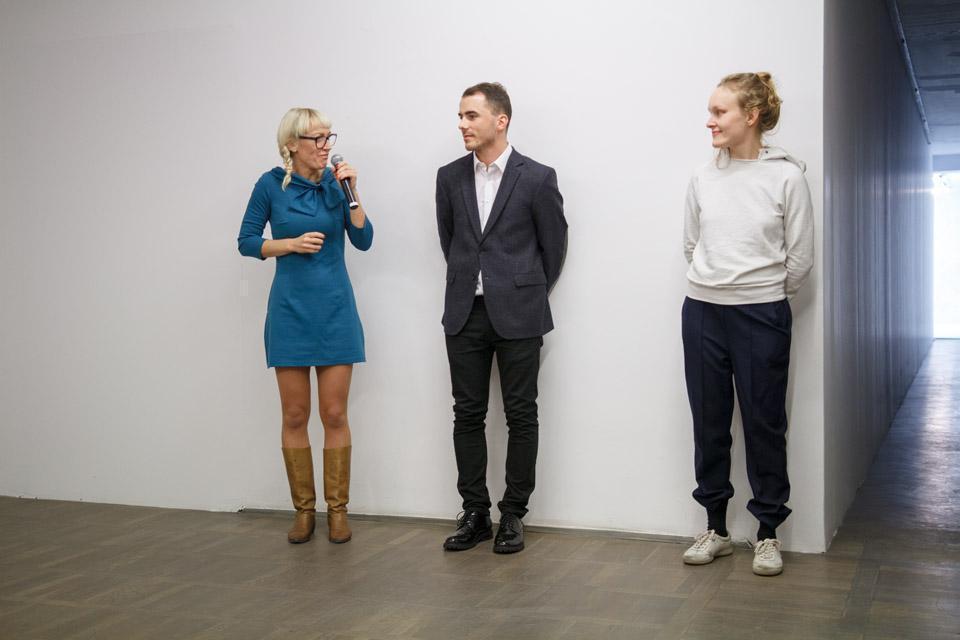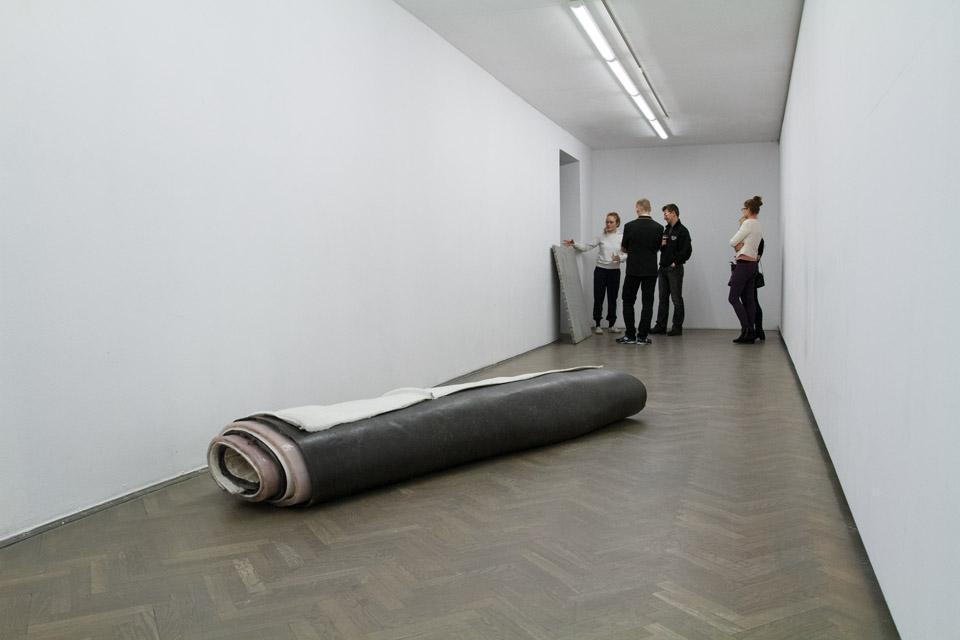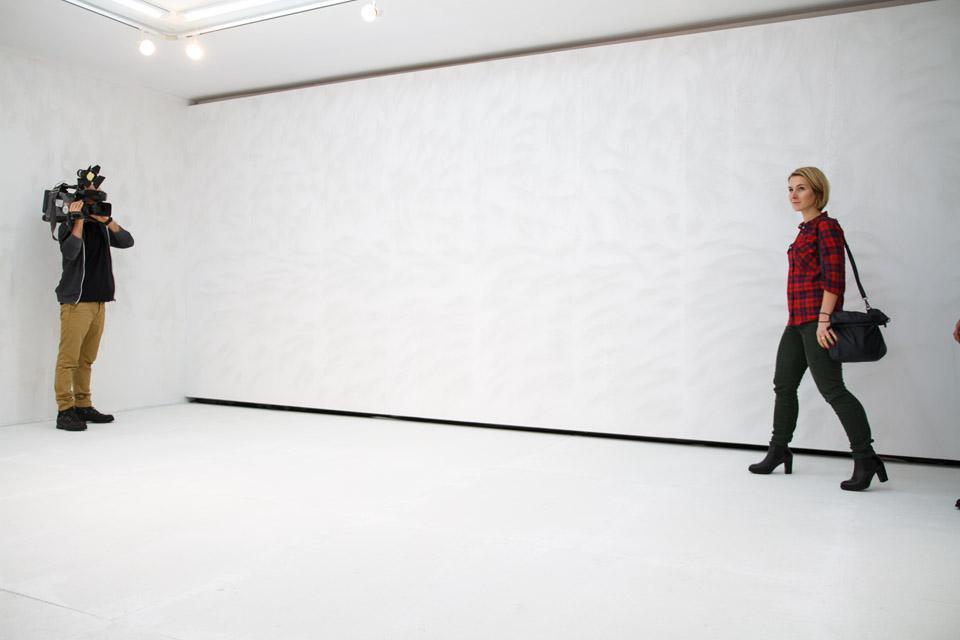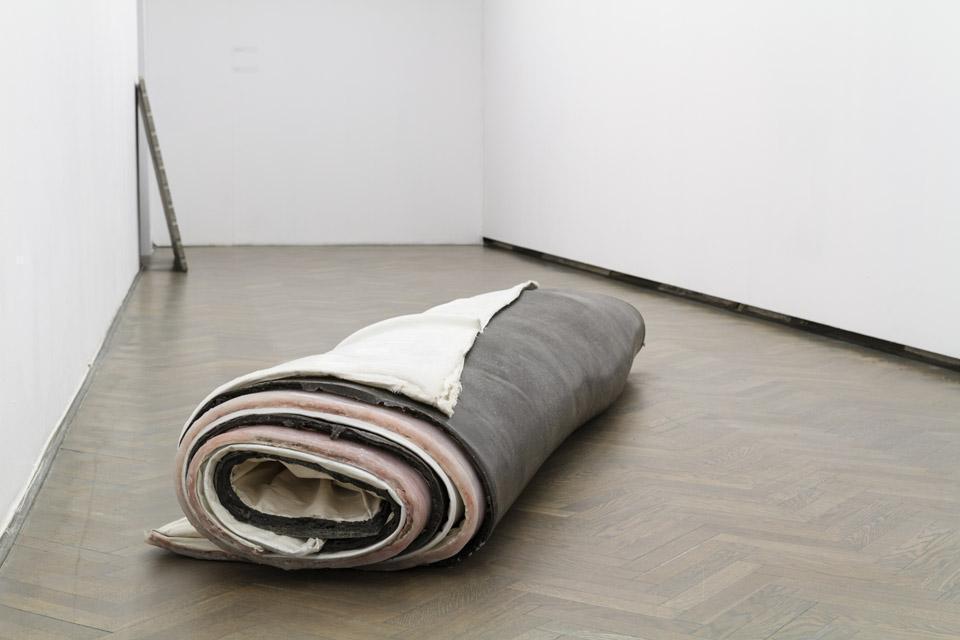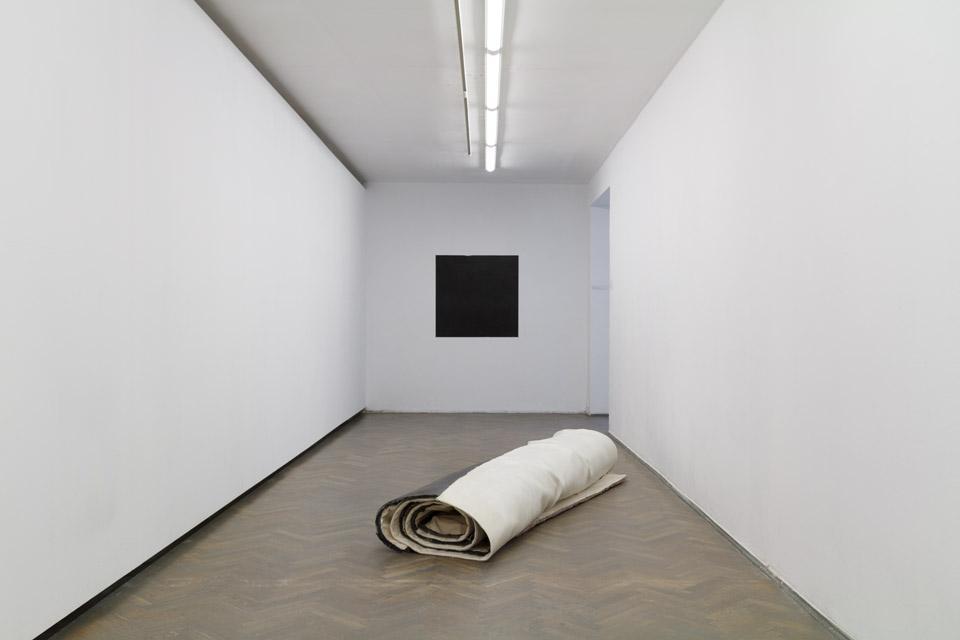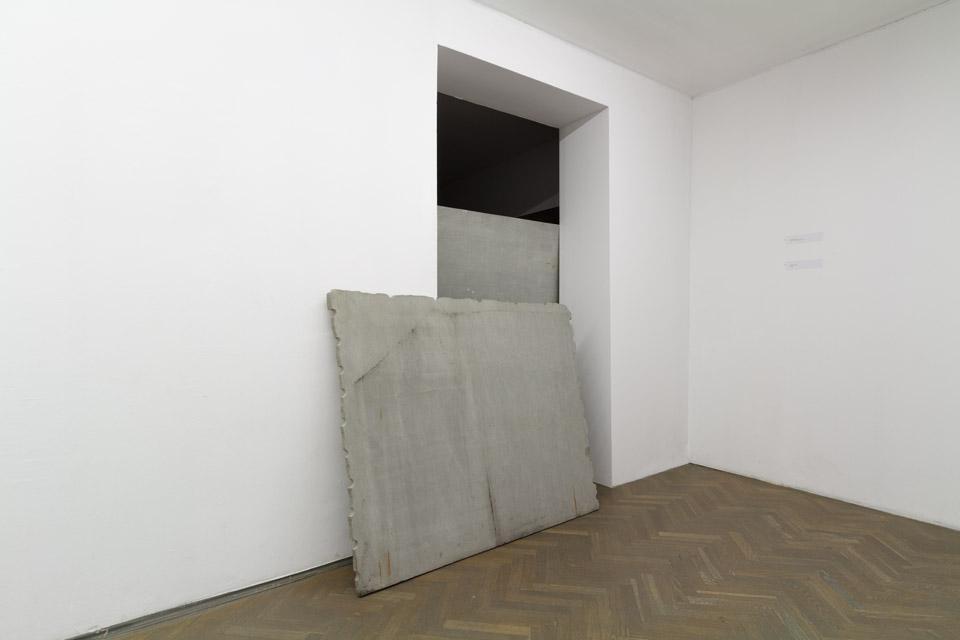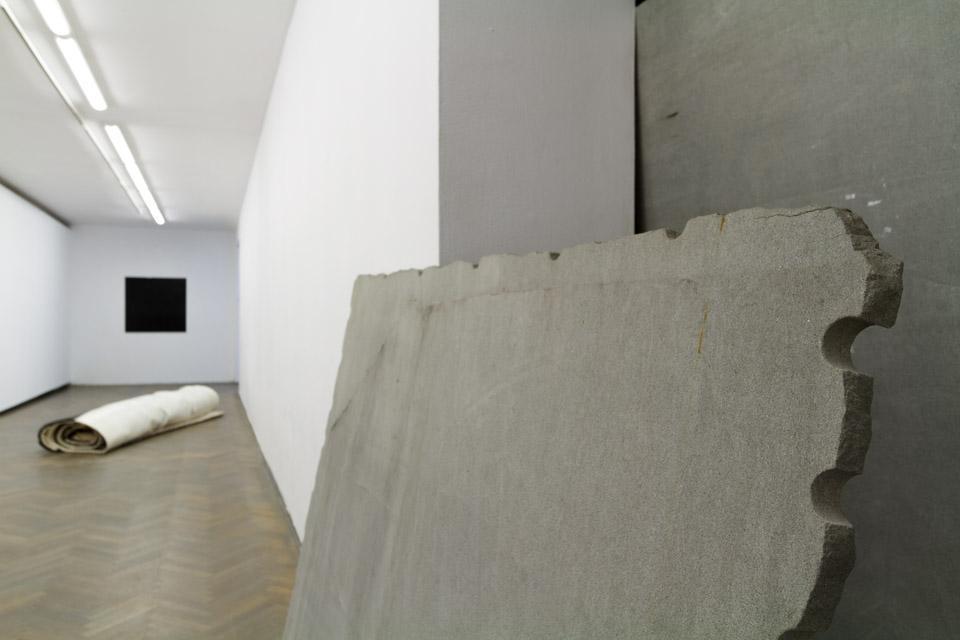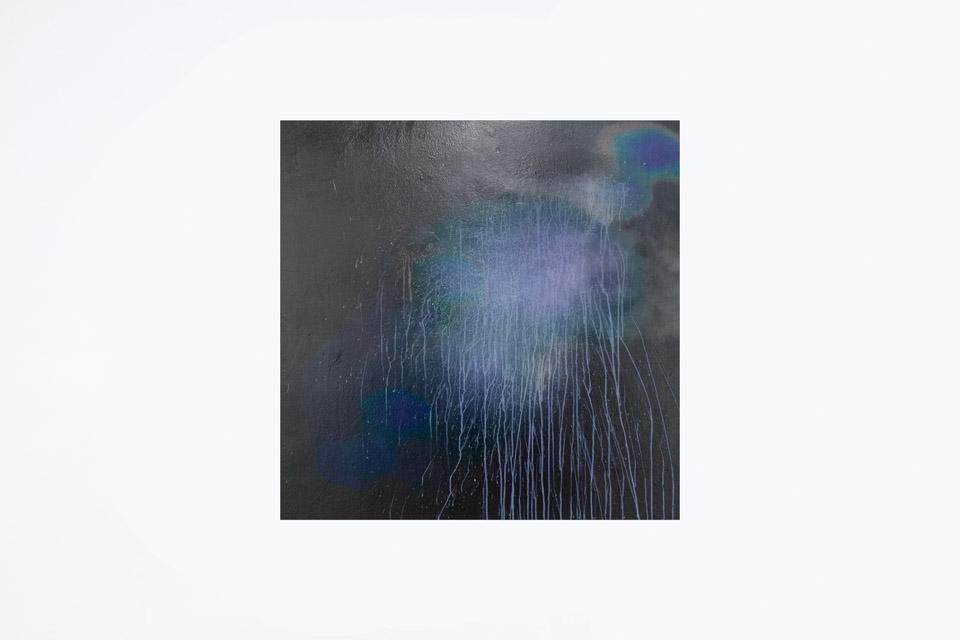Kubik
In a note to the editor, Wittgenstein wrote:
My work consists of two parts: of the one which
is here, and of everything I have not written.
And precisely this second part is the important one.
[On his Tractatus Logico-Philosophicus, in a letter to
Ludwig von Ficker (1919), published in Wittgenstein:
Sources and Perspectives(1979) by C. Grant Luckhard]
If the conditions were auspicious, instead of writing this text I would be scratching the words out with an earring upon a Mexican cactus, preferably while one-handed driving a rented or, better still, a stolen car.
Such artists as Justyna Kisielewska remind us that it is precisely the minimalist works that can be read as icons of the present-day human conditions (for example, the exhibition by Ha Chonghyun, a Korean artist born in 1935, which closed the year 2014 at the Blum & Poe commercial gallery in New York).
Whether large-format and monochromatic (Untitled, 2013, idiosyncratic technique, 240cm by 320cm; Untitled, 2012, oil on stone, 180cm by 140cm; Image, 2010, silicone and acrylic on canvas, 288cm by 250cm; The Second Image, 2011, silicone on canvas, 260cm by 210cm) or minuscule and scintillating (Bez tytułu, 2014, 23.75 kt gold; 0,075 g; Imaging, 2013, X-ray plates transformed into silver of 670 fineness), her works are minimalistic and aesthetically compelling.
The question of whether it is at all possible to speak of aesthetic decisions with regard to Kisielewska’s oeuvre is an open one. She herself declares she would “prefer not to” discuss her works in aesthetic terms.* I am of the opinion that all her projects have a vast potential for activising and the aesthetic decision seems to be relegated to the background.
I am also convinced that if her oeuvre is at all contemplative in nature, it is precisely due to the mysterious active element of her works. This element not only galvanises me as a viewer, but also prompts me to see Justyna as a truly electrifying artist. In the case of these rather enigmatically abstract projects, there is a logic-defying appeal irresistible to me.
Kisielewska is an outstanding artist precisely due to that peculiar activism of hers; I would actually dare to call it social activism. So what is it, then, that makes her stand out?
Journeys and their corporeal aspect
What we are dealing with here is a peculiar journey, but not that romantic nomadic wandering in search of a better place. In fact, I would prefer to call it a rove rather than a journey. It is a rove without a presupposed goal, or the rove itself being its own goal. Or perhaps the goal is to avail oneself of the benefits of roving; after all, how can one perceive a thing passing by again and again? How can one coexist with it? As Elaine Sturtevant puts it: “Repetition is not repeating – it’s interior movement”.
Roving is closer in nature to what animals do when they return to the same places following their own tracks, as they inspect their territories. Even if the boundary gets moved into someone else’s territory, Justyna inspects her own existential potential in a very corporeal aspect; this results, simply, from human experience. “No-one can avoid investigating oneself,” she told me, “avoid checking how much our bodies are able to endure, to go through, to bear, to walk, to hear, to see, to lift, to travel…”*
Contemplating the active element which I have proposed to investigate in this text, Justyna concluded that it originated from the fact that at school she used to be in the sports class.*
Her journeys (especially the way she shoves her bicycle onto a train and completes her travel by traversing a forest while carrying a hammock, occasionally traveling and sleeping in the forest at night) seem to be very close in character to what she does in art.
She does not know what will befall her, but she is ready for it – and with her, an ever-growing group of people who watch her actions.
When Justyna was going to Białystok to set up the “ŃCE”exhibition at Galeria Arsenał, she had the concept of a labyrinth in her head; it seems that the viewer will be made to walk the exhibition space twice. This will not be a journey from point A to point B, however, because, as she said, “there might be a point C on the way and then, imperceptibly, one shall get tangled in space; a point here, a stretch there”.*
Our recent conversation took place in a hastily improvised recording studio, under a table wrapped in carpets and coats; while conversing we were in a supine position.
And so, as I asked for the origin of the title “ŃCE”, gravity was pulling our tongues into our throats. The answer I was given was that it may be a half of the sun, if the word is read literally, or perhaps some other suffix. It is hard to pronounce and the sound “i” seems to rudely intrude into it. This is quite a challenge for the tongue, and by this I do not mean the Polish language, but the body part, the actual anatomic tongue.
Both the title and the organisation of the exhibition space appear to refer to the physical aspect of Justyna’s creative work. I am curious whether this will affect the reception of the works shown therein.
“Topicsmaterialsprocess” said in one breath
I maintain that Kisielewska moves in an alchemical space, although she herself calls it biochemical.* I would, in fact, go one step further and bring up biogeometry here:negative green, a higher harmonic of ultra-violet, a higher harmonic of gold.**Let me just recall the painstaking processes of obtaining high-quality silver from X-ray plates or forming a minuscule nugget of gold with the sole purpose of showing (at the Real-Time Controllerexhibition in the Zachęta Project Room in 2014) only a hologram, a promise of wealth and an illusion of the metal which makes the world go mad.
This is a most peculiar alchemy, which in Kisielewska’s case seems to have the following goals: to notice the “problem/need”, to investigate the “situation” and to attempt to “verify by means of taste”; Justyna is famous among her friends and acquaintances for her sensational culinary achievements, her healthy lifestyle and the anecdotes she tells (one of them being the story of a dead mouse found in a field being very useful in curing children’s ailments).
For Kisielewska, the process of creating a project is a prolonged one. She collects her materials (for instance X-ray plates, trampled remnants of plants, bones, stones) for months on end. She yields to these materials or negotiates with them; she does not impose her artistic vision, but “tunes in” to objects. A case in point are her works in silicone, which for many months served as a mattress frame.
In the end, the verse ńce (2014), which was created specially for this text, turned out to be the only possible method of describing this process:
ńce
– J., to be read aloud
she doesn’t want to kill through whiteness
or give birth instead –
she glitters in the peripheries
cut to size
in the resinous muscle she bays
scanned to zero
sometimes she is the thick human fur
she rubs a monkey and turmeric into her face
puts fire on the back –
seminars on the boxiness of paper on a heap
she was supposed to be a bubbling mass
but she shines through
supposed to stand more courageously and to shield
but she falls at the feet and drips
she hides the metal you so demand
between her thumb and her index finger
she lives sequentially in a wave of active grooves
warmed in the labyrinths by the cow mudra
an honest disciple shall come forward clad in the righteousness of the Sun
a golden man for the golden age!
because he has offered the body of his corrupt substances to be melted in the crucible of the alchemical furnace
oil on stone stone on oil
an alchemy for those who cook and then eat this
The unpretentious (simple unconstrained natural) keeping of feet on the ground
Collaborative projects in which Kisielewska was involved in the year 2011 indicate that her interests are embedded in the social stratus more deeply than it might seem at first glance. Those projects included the N.A.T.U.R.E. workshops at Kabelvåg, the Jan project, in which a friend was to be smuggled to the Lofoten islands at the expense of the event organisers, but without their knowledge, and incorporated into the pre-existing structures, as well as the Border workshops in Poznań, where a group of students from the Goldsmith University of London had their belongings surreptitiously pilfered. These projects demonstrate creative work focused on relationships and ephemeral situations; they reveal concealed social mechanisms in a surprising and unapparent way.
Kisielewska perceives the metaphor of a puzzle, sudoku or crossword as suitable for the description of her interests. Her uncompromising study of the topics that engross her is a sign of the rationality of her actions (e.g. Imaging, 2013, X-ray plates transformed into silver of 670 fineness). In fact, she declares: “I strip [everything] bare of the beauty with which art is concerned, being as it is shrouded in metaphysics and the clever envelope of alluring names such as inspiration, creative need and so forth. In my laboratory, I reduce all this to surfaces, volumes, chemical formulas, covalent and non-covalent bonds. Art is turned into pure mathematics, pure laboratory, which I somehow always wanted to have”.*
Fortunately, the order that accompanies artistic work is not always as logical as some artists would have it (the scientists would agree here).
The existence of irrationality is by definition rational. It is exactly the programmatic non-concreteness and open-endedness of a creative work, as well as the absence of a proper interpretation that would be assigned to it, that connect artistic output intimately with the audience and save it from being a rebus. Democratisation of art is a fact, and Justyna gladly gives a demonstration of it, leaving many questions unanswered.
translated from Polish by Klaudyna Michałowicz
copy-editing: Ming Liu
* Based on my conversation with Justyna Kisielewska that took place on 23rd December 2014.
** See: http://www.biogeometry.com/final/energy/
[1] The one-and-a-half syllable ‘ńce’ may be a part of the Polish word słońce, i.e., ‘the sun’ [translator’s note].
Justyna Kisielewska
Born in 1986 in Narewka, Poland. In the years 2006–2012 she studied at the Academy of Fine Arts in Poznań, Poland, receiving a diploma in painting in Prof. Wojciech Łazarczyk’s studio. She is a visual artist, author of paintings, installations, sculptures and performances. Lives and works in Poznań.
solo exhibitions
2015 – ŃCE, Galeria Arsenał, Białystok, Poland
2008 – No one get out alive, Galeria Enter, Poznań, Poland
selected group exhibitions
2015 – For me, abstraction is real!, Boccanera Gallery, Trento, Italy
2014 – Real-Time Controller vol. II, Zachęta Project Room, Warsaw, Poland
2014 – Delayed But On Time, Galeria Rekursja, Poznań, Poland
2014 – Flowed picture, Galeria FF, 13. Fotofestiwal, Łódź, Poland
2014 – Ung Sulfura Ops, Galeria Miejska Arsenał, Poznań, Poland
2014 – Pure, Galeria Nowa, Poznań, Poland
2013 – ATTENTION: PAINTING!,11th Geppert Competition, BWA Wrocław, Wrocław, Poland
2013 – Płasko/Microcosmos, Baltic Gallery of Contemporary Art, Słupsk, Poland
2013 – Self-organization, BWA Warszawa, Warsaw, Poland
2012 – Nie własność, Madalińskiego 4, Poznań, Poland
2012 – Samozapłon, Galeria Bielska BWA, Bielsko-Biała, Poland
2012 – AAAcupuncture, Galeria Kordegarda, Warsaw, Poland
2011 – Broken screen 2, Lilandgarden Gallery, Kabelvåg, Norway
2011 – Border (presentation of students’ projects from Mirosław Bałka Studio of Spatial Activities at the Academy of Fine Arts in Poznań& Michael Archers’s Studio at Goldsmith University of London), Most Teatralny, Poznań, Poland
2011 – Tarzan, Stary Browar, Poznań, Poland
2010 – Protoplasm, Galeria Arsenał, Białystok, Poland
2009 – It’s a place like, Galeria Aula, Academy of Fine Arts, Poznań, Poland
Curator:
Monika SzewczykJustyna Kisielewska

